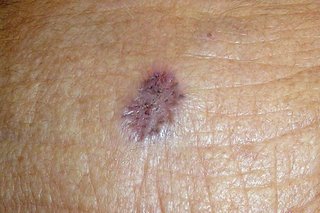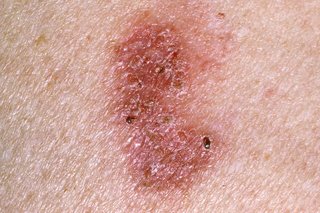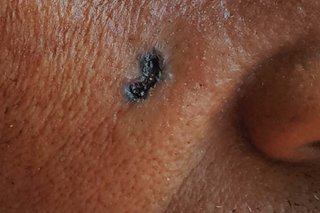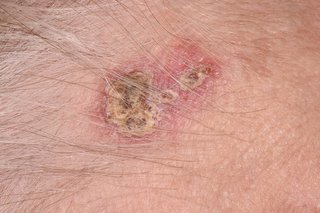Main symptoms of non-melanoma skin cancer
The main symptom of non-melanoma skin cancer is a growth or unusual patch on the skin.
Any part of your skin can be affected, but it's most common in areas exposed to the sun, such as the:
- head, face and ears
- neck and shoulders
- back
- hands
- lower legs
The growths or patches can vary in colour, size and texture.






New mole or changes to a mole
A new mole or a change in an existing mole may be a sign of melanoma. This is a more serious type of skin cancer.
Non-urgent advice: See a GP if:
- you have a growth on your skin that's getting bigger or has changed colour or texture
- you have a growth or area of skin that hurts, itches, bleeds, crusts or scabs for more than 4 weeks
Finding non-melanoma skin cancer early can mean it's easier to treat.
What happens at your GP appointment
The GP may ask some questions about your health and symptoms, and how much time you spend in the sun.
Tell the GP if the growth or area of affected skin has recently changed. Also tell them if you or your family have had skin cancer in the past.
The GP will look at the affected area of skin. They may ask if they can take a photograph to send to a specialist (dermatologist) to look at.
Referral to a specialist
You may get an urgent referral for more tests or to see a specialist in hospital if the GP thinks you have symptoms that could be cancer. This does not definitely mean you have cancer.